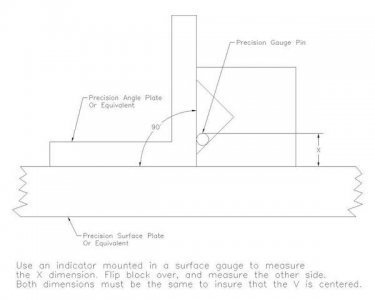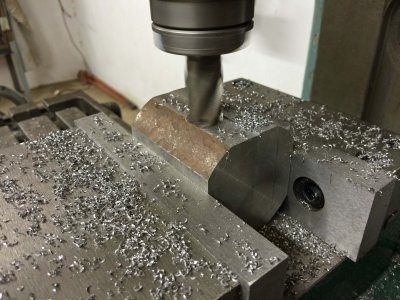Yesterday, I decided to make my own v-block. Items like these are rather hard to find locally, so I took a 2 3/4" (68mm) shaft from a KSB centrifugal pump, cut off the required length, faced both ends in the lathe and then started squaring it in the mill. The final dimensions of the finished block is going to be about 2" wide x 2" high x 2 3/4" long. I've still got some way to go, but I would like some opinions on the V, please.
1. What will be the best way to cut the V? Do I tilt the block 45 deg in the vice or do tilt the head of my mill 45 deg and keep the block flat in the vice?
2. How deep do I mill the V, or do I mill it up to a specific width on the open side?
3. Can I also mill another V on one of the ends of the same block to accommodate smaller workpieces?
Any other opinions and advice would be much appreciated.
1. What will be the best way to cut the V? Do I tilt the block 45 deg in the vice or do tilt the head of my mill 45 deg and keep the block flat in the vice?
2. How deep do I mill the V, or do I mill it up to a specific width on the open side?
3. Can I also mill another V on one of the ends of the same block to accommodate smaller workpieces?
Any other opinions and advice would be much appreciated.



